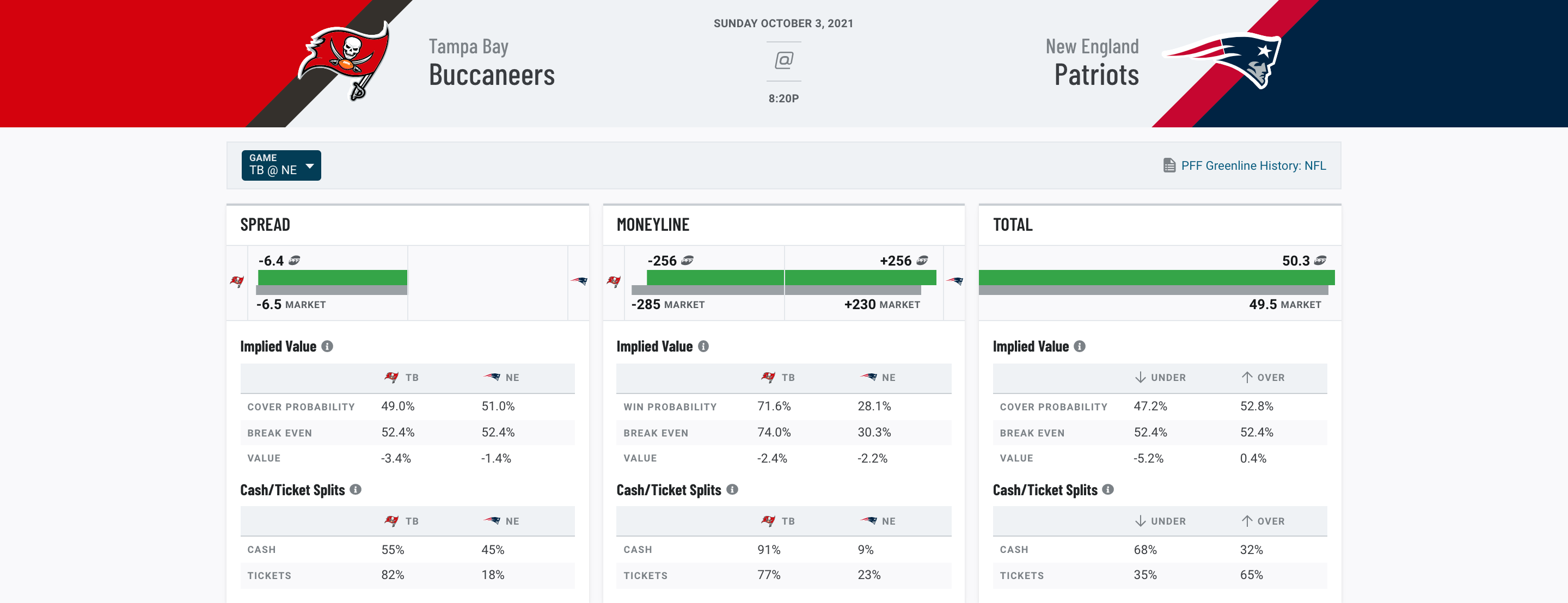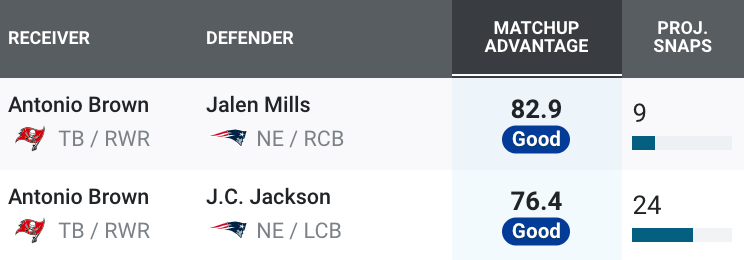Last season, it was clear that Kansas City had fallen into a habit of playing with its food for a half or more before turning up the gas and pulling away. Today’s game in Philadelphia was no different, as they turned a 21-13 score at halftime into a 42-30 win over the Philadelphia Eagles.
Patrick Mahomes finished with five passing touchdowns, and Clyde Edwards-Helaire protected the ball on the way to a 100-yard day on the ground.
Click here for more PFF tools:
Rankings & Projections | WR/CB Matchup Chart | NFL & NCAA Betting Dashboards | NFL Player Props tool | NFL & NCAA Power Rankings
Kansas City Chiefs
Quarterbacks
One thing is for certain with the Eagles defense — it will protect itself against the explosive pass at all costs. Mahomes didn’t have much space to take shots downfield — he threw the ball 7.4 yards downfield on average — but was content to allow his receivers to do the work after the catch. In all, 45% of his production came from his pass-catchers creating offense of their own.
Running Backs
Protecting the football was the theme of the week for Clyde Edwards-Helaire. If he could go without putting the ball on the ground, there would be plenty of opportunity against an Eagles defense playing soft coverage.
The second-year back averaged 3.6 yards before contact per attempt and still fought through tackles to gain 51% of his production after defenders got to him.
Wide Receivers/Tight Ends
Philadelphia had no prayer of eliminating both Travis Kelce and Tyreek Hill on Sunday. Sinking into the intermediate windows was effective when it came to shrinking Kelce’s production — six targets, four catches, 0.77 yards per route run — but giving Hill space to find soft spaces in zones was a doomed strategy.
Andy Reid used Hill to attack in the RPO game — he came away with 41 yards and a touchdown on four RPO plays — and the play-action game opened up space to take deep shots. Hill finished with 10.11 yards per route run on play-action passes and was targeted 24 yards downfield on average.
| Tyreek Hill Production | Targets | Yards Per Route Run | Gains of 15+ Yards | Average Depth of Target |
| RPO | 4 | 8.2 | 1 | 11.5 |
| Play action (No RPO) | 3 | 10.11 | 2 | 23.7 |
| Straight dropback | 5 | 3.6 | 1 | 8.2 |
Offensive Line
Orlando Brown Jr. was the only blemish on a strong performance from the Chiefs offensive line. The young tackle allowed five pressures, the only Chiefs lineman to allow more than one.
Running the ball may not have a statistically significant effect on the play action and dropback passing game, but it was clear that Philadelphia couldn’t ever get into scenarios where it felt comfortable attacking the QB.
Defensive Line
Chris Jones did what Chris Jones does, finishing Sunday with six pressures. Alex Okafor took advantage of Philadelphia’s battered offensive line with five pressures of his own, generating pressure on 17% of his pass-rush opportunities.
Jalen Hurts was quick to leave the pocket when he sensed danger from Steve Spagnuolo’s pressure packages, so no player was able to secure a sack.
Linebackers
The Chiefs' second level could come back to haunt them at some point, but today wasn’t ever going to be the day that happened. Anthony Hitchens and Ben Niemann put together four pressures in their 13 combined opportunities, two being unblocked thanks to how Spags uses his sub-packages to blitz.
Secondary
Mike Hughes drew the DeVonta Smith matchup and had difficulty dealing with the rookie wideout's ability to release at the line of scrimmage and create separation at the top of his route.
Hughes allowed five first downs and a touchdown on his 13 targets, surrendering over 100 yards (1.8 yards per coverage snap) by the end of the game.

Philadelphia Eagles
Quarterbacks
This Eagles offense is hardly built to win when Jalen Hurts drops back 30 times, let alone 50.
Hurts didn’t finish with any interceptions, but it wasn’t for lack of effort, as he recorded two turnover-worthy plays. Philadelphia is in a difficult place in the passing game: Hurts’ ability to extend is his best quality, but his downfield accuracy is his worst. In all, five of his six deep throws fell incomplete, and one of those earned the turnover-worthy designation in PFF's grading system.
| Jalen Hurts Passing by Depth of Target | Completion Rate | Passer Rating | Yards Per Attempt |
| 20 or more yards | 17% | 52.8 | 6.2 |
| 10-19 yards | 70% | 143.3 | 11.9 |
| 1-9 yards | 90% | 114.7 | 7.3 |
Running Backs
Playing against Kansas City is an exercise in futility for teams without elite firepower. Surely, Philadelphia came into the game looking to control the flow of the game with short passes and the run game. As it became clearer that they could not manage things that way, there was less room on the play sheet for runs. Jalen Hurts finished with more rushes and yards than Eagles lead back Miles Sanders, who mustered 13 yards from seven attempts.
Wide Receivers/Tight Ends
DeVonta Smith continues to be the only bright spot for Eagles fans after racking up 122 yards on 10 targets. Hurts may not look to push the ball downfield often, but when the offense needs a play, Smith is the only one Philadelphia trusts.
In total, 40% of the Eagles' explosive passes came on Smith’s targets, and there has to be concern about what happens to the offense when defenses shade more coverage in his direction.
| Devonta Smith Route Tree | Routes | Yards Per Route Run |
| Hitch Route | 8 | 5.63 |
| Corner Route | 2 | 18.5 |
| Screen | 4 | 5.50 |
| Out Route | 3 | 4.00 |

Offensive Line
Taking 58 dropbacks against a defense like Kansas City’s — which wants nothing more than to defend the pass — isn’t a winning business model. Tackle Andre Dillard and Guard Jack Driscoll filled in with Lane Johnson and Jordan Mailata out, and the two combined to surrender nine pressures.
Defensive Line
Derek Barnett was the only player up front to have a strong performance, recording a 20% pressure rate. Josh Sweat was the only other Eagle to generate more than one pressure, and Javon Hargrave was able to pick up a coverage sack, as well.
Linebackers
The Eagles couldn’t be more opposite in their use of second-level defenders in comparison to Kansas City. The linebacker corps only had five combined pass rush opportunities, with one pressure.
This carries over to the run game: With such a conservative approach, no linebacker logged a tackle for loss or no gain, and only two had a defensive stop in the run game.
Secondary
The Eagles secondary was an equal opportunity buffet for Kansas City on Sunday. As a unit, it surrendered 12 receptions on 16 targets (nine going for a first down or touchdown), 5.19 yards per coverage snap and a 152.9 passer rating.
In spite of trying to play softer coverage, 11% of Kansas City’s passes went for 15-plus yards. Much like their Monday Night game against the Cowboys, there isn’t enough pass rush or ability to stop the run to put this position group in a position to succeed.



 © 2025 PFF - all rights reserved.
© 2025 PFF - all rights reserved.